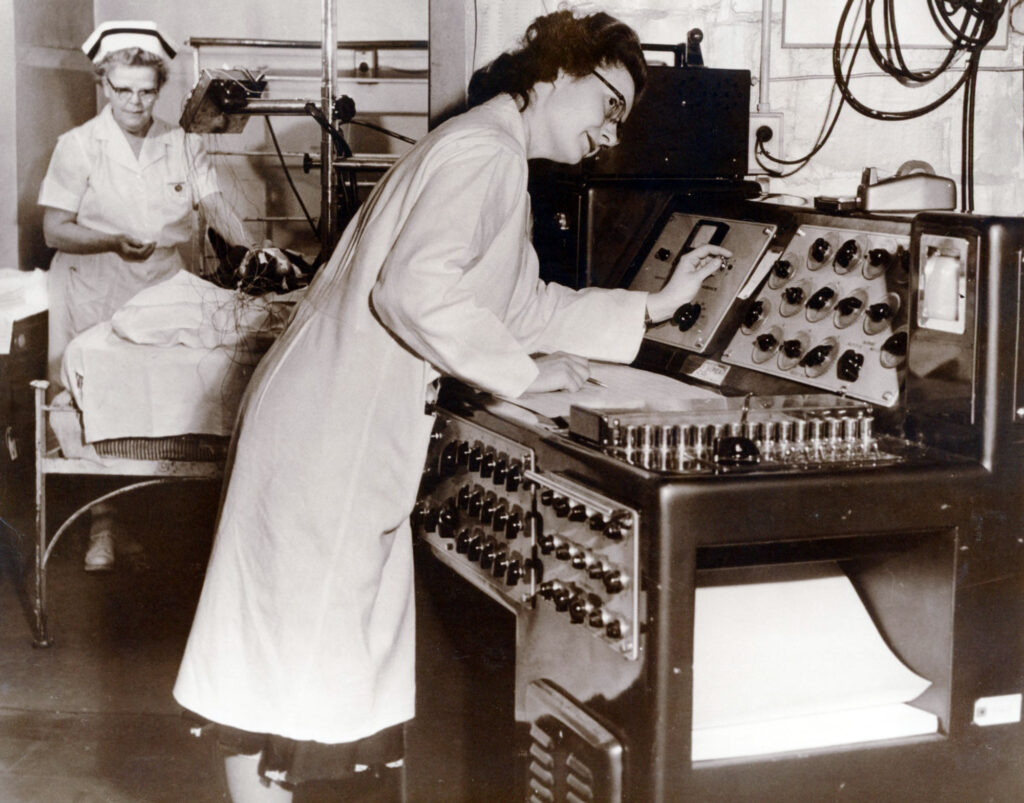“[Encephalographic laboratory] was too much of a linguistic mouthful even for hardened scientists,” noted former hospital president Nathaniel W. Faxon, MD, “so the name was by universal agreement shortened to ‘brain-wave laboratory.’” The lab moved to the fourth floor of the Bulfinch Building in 1940 after three years in a makeshift space. Encephalography (now commonly shortened to EEG) is the study of electrical activity in the brain, used for studying seizure disorders, brain tumors, sleep disorders and a range of other conditions. While there were some research precursors to this field in the late nineteenth century, advances in technology made EEG a usable clinical tool in the mid-1930s.

